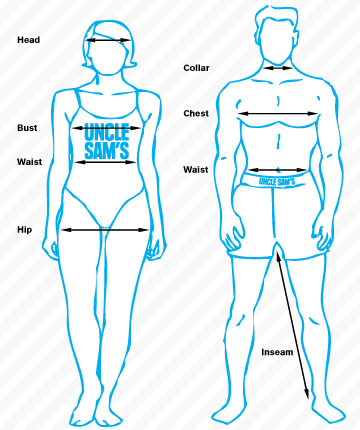Get a EXTRA SURPRISE Discount @ Checkout.
The frontmost portion of the jacket has two large hip pockets and two medium-sized breast pockets. The rearmost neck portion and collar of the jacket features a zipper which houses a protective hood. The M-1965 field jacket can be combined with a button-in insulated lining for cold-weather wear, but is sold separately.
Classic and Original (liner may be a replacement/new liner)
Used Good - classic used, wearable
Used Excellent - looks excellent.
A LITTLE BLURB ON THIS CLASSIC JACKET.
The final of the four great, 20th-century American military jackets (the others being the M-1941, M-1943, and M-1951), the M-1965 saw service between 1965 and 2005, during which it underwent a metamorphosis from common service outwear, to protest symbol, to menswear staple. A true American sartorial icon, the M-65 — sold as surplus and repurposed by allied soldiers — even found its way into the ranks of other countries’ militaries and continued the fight on distant battlefields.
 M-1941/Parson’s jacket (left) and M-1943 experimental field jacket (right) - (Image by Semantic Scholar)
M-1941/Parson’s jacket (left) and M-1943 experimental field jacket (right) - (Image by Semantic Scholar)
In 1940, the U.S. military released the first iteration of the now-ubiquitous field jacket, the M-1941. Hip-length, loose fitting, and made from cotton poplin with a wool flannel cloth lining, this olive drab-colored coat was too lightweight to do much good in the field — though it remained in service through the end of the Second World War. Its replacement, the M-1943, was fabricated from sateen cotton for waterproofness, lined with poplin, and featured four front pockets with a button front, increasing its utility and comfort. Made to be worn with a pile field jacket liner in cold weather, it was produced in two iterations.

Largely unknown outside of collector circles, the short-lived M-1950 (Dec. 1950-spring 1951) succeeded the M-1943, adding buttons for an internal liner. Its successor, in turn, began to take on a distinctly modern aspect with the addition of snap fasteners (in place of buttons) and a zippered front. With its optional hood that could be buttoned into the collar, drawstring bottom hem, and buttons for an optional internal wool-pile liner, the M-1951 was much better suited to the cold conditions in Korea than the previous iterations of the field jacket.
 Soldiers in M-65s, with a few M-51s featured as well. You can tell the M-51 by its shirt collar, whereas the 65 has that chunkier collar for the collapsible hood. (Image by Heddels)
Soldiers in M-65s, with a few M-51s featured as well. You can tell the M-51 by its shirt collar, whereas the 65 has that chunkier collar for the collapsible hood. (Image by Heddels)
Finally, we arrive at the much-loved M-1965, whose original issuance dates to that year. Outfitted with two medium-sized breast pockets, two hip pockets, a zippered front with button-down storm flaps, a zippered collar compartment housing an included hood, liner buttons, hook-and-loop button cuffs, and — on most versions — epaulettes, the M-65 was originally issued in the army’s ubiquitous olive green cotton, cotton-nylon, or cotton-polyester sateen. Water-resistant, windproof, and durable, it saw service throughout the Vietnam War and beyond and was subsequently produced in various camouflage types to coincide with advancing uniform regulations.
 A vintage M-65 produced by Alpha Industries - (Image by Alpha Industries)
A vintage M-65 produced by Alpha Industries - (Image by Alpha Industries)
Originally, the M-65 was manufactured by Tennessee-based Alpha Industries, which still makes versions of the jacket. Though original examples (and Alpha’s current iterations) are purposefully boxy to accommodate a button-in liner for cold weather use, contemporary versions — such as those by Saint Laurent, Valentino, and others — often feature slimmer silhouettes and other modifications to make for hipper takes on what was a strictly utilitarian garment.
 Taxi Driver’s veteran anti-hero, Travis Bickle - (Image by Film Inquiry)
Taxi Driver’s veteran anti-hero, Travis Bickle - (Image by Film Inquiry)
Despite its military origins — or, perhaps, because of them — the M-65 became symbolic of the anti-War movement and of American counterculture more broadly. As veterans returned from southeast Asia, they wore their issued M-65s to protest rallies, while maladjusted characters such as Taxi Driver’s protagonist veteran Travis Bickle and Annie Hall’s Alvy Singer sported them in decidedly urban contexts. Al Pacino can be seen wearing one as Frank Serpico, while Arnold Schwarenneger even throws one on as a cyborg in 1984’s The Terminator — customized with leather and studs.
 Longines Greenlander 'WWW' - IN THE SHOP
Longines Greenlander 'WWW' - IN THE SHOP
These days, M-65s are everywhere: You can snag an offshore version from the likes of Rothco for $125; an American-made, vintage version (and even a deadstock version) from online suppliers such as Rare Gear USA for between $100-$250; or a painstakingly reproduced version from the like of The Real McCoy’s for $841. One of the longest-lasting issued items in the U.S. military’s rotation, the M-65 is a true American fashion icon — versatile, handsome, and above all, useful.














